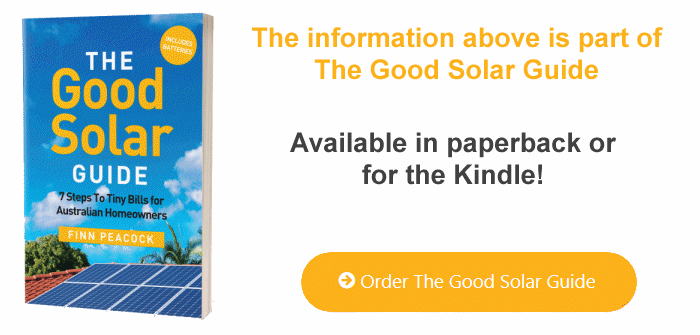What Is The Difference Between Power And Energy?
← Essential Knowledge | The Good Solar Guide Contents | Rebate Vs. Feed-In Tariff →
Knowing the difference between power and energy is important. First I’ll define the two terms, then explain why understanding the difference is critical when dealing with solar power.
What is power?
Power is the rate at which energy flows. Here are some examples when talking about electricity.
- The rate at which a solar panel can push out electricity in full sun, for example, ‘a 250 W solar panel’
- The maximum rate at which a battery can accept electrical energy when charging, for example, ‘the battery can charge at 3 kW’
- The maximum rate that a battery can kick out its stored energy when discharging, for example, ‘the battery can discharge at 3 kW’
- How quickly an appliance gobbles energy, for example,
‘that heater uses 2 kW’
If you think of electrical current as water in a hosepipe, its power is the flow rate at which the water travels.
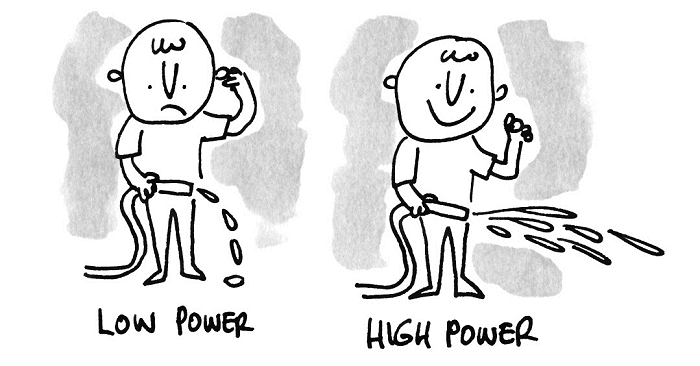
Figure 1.1 Electrical power is analogous to the flow rate of water through a hosepipe.
The size of a solar system is defined by the ‘peak power’ in kW, of its solar array (where ‘solar array’ is the collective term for all the solar panels). For example, a 3 kW solar system, might consist of ten 300W solar panels on the roof. This solar array can push electricity out at a maximum rate of 3 kW (3,000 watts).
For most of the day the solar panels will not produce at their peak power. Only in full midday summer sun, in perfect conditions and with perfectly clean panels, will the electricity flow out of those panels at the system’s nameplate peak power. For example, that 3 kW solar array should give out 3 kW of power under perfect conditions.
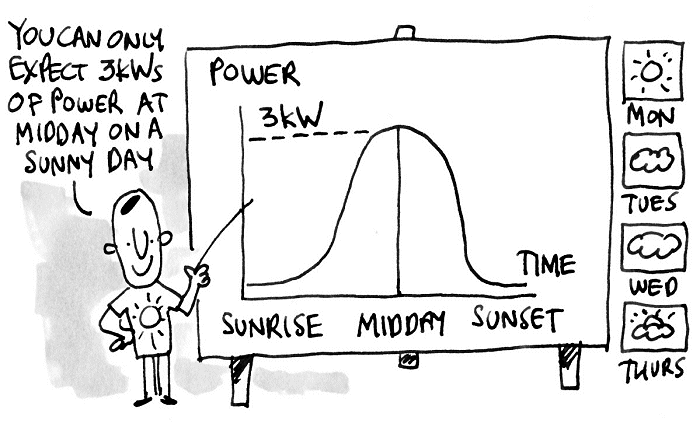
Figure 1.2 The power from a 3 kW solar system changes throughout a continuously sunny day.
In practice, you often get about 20% less than the peak power rating because of unavoidable losses in the system, such as:
- dirt on the panels
- the resistance of the wires to your roof
- solar inverter losses
- temperature losses from the solar panels (more on this later)
So the curve for a 3 kW system in the real world typically peaks at closer to 2.4 kW.
Online resource: Find more info about solar panel losses here: solarquotes.com.au/losses
To recap, a solar system’s size is defined by the peak power output of the solar array.
What is energy?
The abbreviation kWh stands for kilowatt-hour. A kWh is a measure of energy (not power). Energy is how much electricity has been generated, stored, or consumed over time.
With our water analogy, where power is analogous to flow rate, if the flow is directed at a bucket, the amount of water collected in the bucket is analogous to electrical energy.
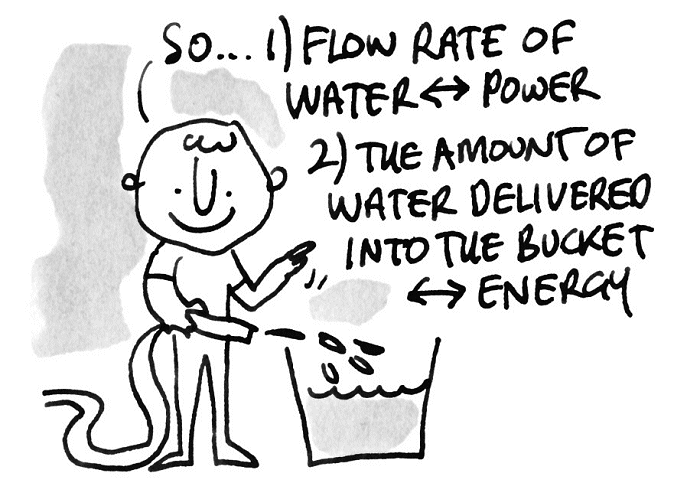
Figure 1.3 The water/electricity analogy
If your solar panels (for example) continuously give out 5 kW of power for a whole hour, you will have produced 5 kWh of energy.
That energy could get used by your appliances, it could be exported to the grid or, if you want to get fancy, it could be stored in a battery – just like storing water in a bucket. Or it could be divided among the three.
The amount of electricity you use (or generate or store) is defined in kWh. For example, ‘My solar system produced 4 kWh of electricity today!’ or ‘My heater used 2 kWh of electricity today’ or ‘This battery can store up to 10 kWh of energy’.
Key point: A good way to cement the difference between power and energy is the battery and bucket analogy. With a bucket and a hose, the higher the power of the hose, the faster you can fill your bucket. The size of the bucket determines how much water the bucket can accept.
With a battery, the higher the power rating of the battery (in kW), the faster you can fill or empty the battery. The higher the energy capacity (in kWh) of the battery, the more electricity it can store.
When you get billed for electricity, you get billed for how many kWh of energy you have used.
At the highest level, kW measures power, and kWh measures energy.
If we look at the solar system power curve graph again, the amount of energy generated in kWh is shown as the area under the curve:
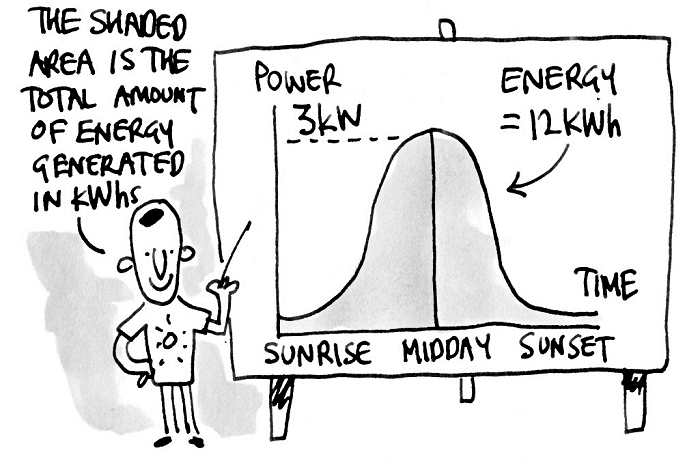
Figure 1.4 The energy generated by a solar system in one day is the area under the power curve.
Knowing the difference between energy and power is important?
It is common for people to mistakenly interchange the terms energy and power as if there were no difference. Most people do it all the time without noticing, even many electricians. It drives electrical geeks like me up the wall. Especially when I read it in national newspapers and books!
For example, if someone is talking about their electricity use and says, ‘I used 8 kW yesterday,’ strictly speaking, they mean, ‘At one point in time yesterday my power demand got to the point when I was pulling 8 kW of power from the grid.’ It gives us no indication of how much energy they actually used – only the peak power they hit.
It is the equivalent of saying, ‘I went for a drive and did 140 kph yesterday.’ It gives us no idea how much distance they travelled, only that, at least once, they hit a max speed of 140 kph (they must have bought the Ferrari, not the Hyundai3)
The person who thinks they used 8 kW almost certainly means that they used 8 units of electrical energy yesterday, in which case they should have said, ‘I used 8 kWh yesterday.’
Yeah, yeah, I know what you’re thinking: who cares?
Well, it’s like our driver saying ‘I went 140 kph’ when they actually meant ‘I went 140 km’. It totally changes the meaning, and causes ambiguity that could be costly.
This is important if you’re buying a solar system. If someone says they need a solar power system to produce 8 kW, they might end up being quoted for an 8 kW solar system. That will cost about $10,000 at today’s prices and produce about 32 kWh of energy per day averaged over a year.
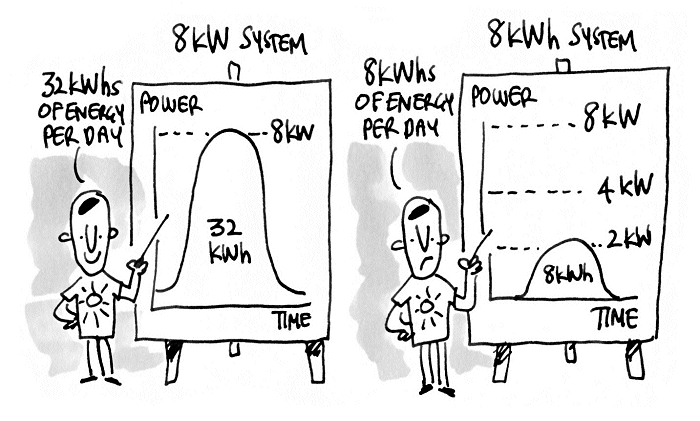
Figure 1.5 An 8 kW solar system is much bigger than an 8 kWh solar system.
Please don’t confuse kW and kWh. If you do, you may end up with a solar system that’s completely the wrong size.
If what they actually meant was that they needed to cover an energy use of 8 kWh per day then they really need a 2 kW solar system, which costs about $3,000 at the time of writing and produces, on average, 8 kWh of energy per day.
Tip
A simple way to estimate how much energy you can expect, on average, per day from a solar system in Australia is to multiply the system size by 4. For example, a 5 kW system will average around 20 kWh of energy production per day.
Top tip for filtering out the worst solar salespeople
Ask them to explain the difference between a kW and kWh. If they get this wrong, how on earth will they understand your requirements? A lot of cold-calling door-knockers and solar telesales people will fail this test.
In fact, never entertain a cold call by phone or at the door.
There are just too many crooks out there.
Online resource: If you come across any other jargon on your solar journey, I’ve got a glossary of solar terms here: solarquotes.com.au/glossary
Now you know the difference between solar power and solar energy (or, more generally, the difference between power and energy), you are well equipped for a future where you take more responsibility for your own energy. It’s like knowing what a gigabyte is – unthinkable ten years ago, indispensable now if you want to understand whether your next smartphone will store all your apps, photos and videos.
3OK, OK, Hyundais can totally do 140 kph. All that’s required is a cliff.
← Essential Knowledge | The Good Solar Guide Contents | Rebate Vs. Feed-In Tariff →
Questions or feedback about the content on this page? Contact me.
